#ddr ludwig
Explore tagged Tumblr posts
Text
















Sibylle Bergemann
- Das Denkmal
1975 – 1986
Sculptor: Ludwig Engelhardt
#Sibylle Bergemann#Ludwig Engelhardt#karl marx#friedrich engels#monument#Marx Engels Forum#berlin#Das Marx Engels Forum#sculpture#east germany#gdr#Deutsche Demokratische Republik#ddr
459 notes
·
View notes
Text
I have a question to my fellow fic writers/headcanon people in the Hetalia fandom: When you think about Human AU versions of the characters, how do you decide on their religion (if you make them raised religious/actively religious)? Especially when you have a country with several, sizeable denominations or branches or ... versions of a religions? (I was raised Evangelical, aka Protestant in Germany, so I only know it's denomination for Christianity. But I do know that there's also different branches for other religions). Do you go with what's statistically most likely? Go with what you want to explore the most? Go with what you know the most? I'm curious.
I've been thinking about what brand of Christianity I should give my Scottish OCs, including the Scotsman himself, for a while now but I can't seem to make up my mind. He has a Highland Clan surname, so Catholic would make sense. He was born and raised in Edinburgh however and I also always find it quite funny when he calls the Irishman 'Cath boy.'
(I also mentioned Human versions specifically because I'd imagine that the thought process for headcanons set in the canon universe is a bit different, since they were alive for much longer and are influenced by their surroundings in a different manner).
#aph#hws#hetalia#hetalia fanfic#hetalia headcanons#Genuinely curious about this ...#And I also genuinely have to sit my ass down and decide on something for the Scots#But I was also thinking recently that it could make immense sense for Ludwig to be catholic#my Gilbert is a STAUNCH Lutheran with a tiny dose of that DDR atheism of his mother#but if their dad's side married into the Edelsteins and they lived in the Cologne region ...#It could make sense if Wolfgang was a Catholic
43 notes
·
View notes
Video
youtube
Ludwig Lustig und seine Dixielanders: „Im August blüh'n die Rosen“ (Dixi...
Musik: Günter Fredrich
Der Titel ist ursprünglich als Lied für die ersten von der FDJ organisierten „Weltfestspiele der Jugend und Studenten“ (1951 in Ost-Berlin) komponiert und getextet worden.
Ludwig Lustig (Günther Karpa) und seine Dixielanders
Aufnahme aus dem Jahr 1964 (DDR, Amiga).
0 notes
Text
Summaries:
Scooby Doo, my incarnation: The first part of Episode 1, when trying to leave their hometown of Crystal Cove to start their second year of college, the Mystery Gang finds themselves trapped in Crystal Cove.
My TMNT incarnation, episode 1: After befriending April O'Neil, the Hamato brothers and Casey Jones must rescue her from a mysterious baron with a sinister plan.
TMNT incarnation, before the events of option 2: April O'Neil doesn't expect to make a new friend when on a late-night studying bender.
LMK: Spicynoodles adopt a cat when they move in together. A few months later the cat refuses to leave Xiaotian alone.
LMK: Political drama au where to reduce the offers for his hand, Sun Wukong marries Azure Lion. This backfires because now eyes are turning to Qi Xiaotian, his successor. Now Wukong has to juggle Azure’s feelings for him and arranging a match for Xiaotian.
Poppy Playtime: Carnation Ludwig finds a dead body in her father's room.
OK-KO: AU of Let's Get Shadowy where, in the haze of surprise, T.K.O is given control and Venomous is forced to team up with the bodega heroes to both deal with the turbo version of his son and figure out what Shadowy Figure wants.
PJO: The Romans do not take kindly to random people judo-flipping their praetors, and Annabeth is forced to think about the amount of violence in her and Percy's relationship. (A thing that came to mind when re-reading the books.)
LMK: Long Xiaojiao is challenged to play Mario's version of DDR.
LMK: Spicynoodles is very happy together and just had a baby girl when one of Qi Xiaotian's exes claims that he and Xiaotian have had an affair and the baby is his...the baby who is the splitting image of Red as a calf.
LMK/FNAF: After a nasty argument with her parents, Long Xiaojiao decides to cut herself off financially from them and get a job. However, the only available position is a night guard of an American pizza chain. Shouldn't be too hard...right?
LMK: After LBD's defeat, Qi Xiaotian decides (with some "gentle" encouragement from everyone) to take the summer off work and training. The moment he mentions the monkey village and Wukong's shame temple to her, Long Xiaojiao suggests maybe they work on fixing it up! Red gets dragged along too.
#LMK#Monkie Kid#LEGO Monkie Kid#Five Nights at Freddy's#FNAF#Percy Jackson#PJO#OK KO!#Poppy Playtime#PP#TMNT#Teenage Mutant Ninja Turtles#Scooby Doo#SDMI#poll
44 notes
·
View notes
Text
Heute wird die Petition gegen den Abriss des Jahn Stadions an die Senatsverwaltung übergeben. 13912 Unterschriften stehen darunter, ein paar fehlen noch.
Es verblüfft, mit welcher Geschwindigkeit die Stadtentwicklung vorgeht, um Platz für die neuen „modernen“ Betonklotze, zu schaffen. Mehr Beton, noch mehr Beton! Alles, was an die DDR und die Geschichte Berlins erinnert, muss aus dem Stadtbild schnell entfernt werden. Unterschreibt bitte, vielleicht bringt es was
3 notes
·
View notes
Text
Die Felsenbühne Rathen

Die Felsenbühne Rathen Unter der Felsenburg Neurathen und der Bastei, zwischen den Felsen Großer Wehlturm und Kleine Gans findet man am oberen Ende des Wehlgrundes die Felsenbühne Rathen. Von den 1.954 Plätzen sind 1.800 zum Erwerben da. Zu dieser Felsenbühne der Sächsischen Schweiz kommt man durch den Kesseleingang, der etwas über der Mündung vom Amselgrund links abzweigt. Geschichtlicher Hintergrund Die Thingbewegung (Gemeinde Rathen) brachte den Vorschlag, dass man einen Platz für Aufführungen von Musikstücken, sowie Schauspielen bräuchte und dass das Freilichttheater sich dafür ideal eignen würde. So wurde das Theater im Jahr 1936 angelegt. Die Eröffnung fand am 24. Mai gleichen Jahres statt. Sie wurde mit dem Stück "Basteispiel" von Kurt Arnold Findeisen eingeweiht, wobei 200 Bewohner der Stadt Rathen sich hinter oder vor der Bühne befanden. Der Sächsische Gemeindekulturverband nahm die Bühne 1937 in Obhut und im darauffolgenden Jahr konnte man sich hier die ersten Karl-May-Festspiele anschauen. Ab 1942 wurden dann die Festspiele im Zusammenhang mit dem 2. Weltkrieg still gelegt und erst im Jahr 1946 wieder aufgelebt. Ab dem Jahr 1954 bespielt die Landesbühne Sachsen die Felsenbühne Rathen, das erste Mal am 9. Juni 1954 mit dem Schauspiel "Götz von Berlichingen". Die Spielsaison ging im Jahr 1954 von Juni bis August und wurde von mehr als 90.000 Besuchern beigewohnt. Es folgte eine Periode, in der überwiegend musikalische/dramatische Stücke vorgetragen wurden, wie "Der Freischütz" (1956), "Die Räuber", "Wilhelm Tell", "Was ihr wollt" und "Iphigenie auf Tauris", die durch die Naturfelsen außerdem eine besondere Wirkung hatten. Im Jahr 1884 war es dann soweit, dass man die Tradition der Karl-May-Rezeption der Landesbühne Sachsen, die man auf Zeit unterbrochen hatte, wieder fortgeführt hat. Dies geschah mit "Der Schatz am Silbersee", mit der Bearbeitung von Helmut Menschel. Auch kam die Felsenbühne im Herbst 1984 bei den Dreharbeiten von "Ein Schritt zu weit" (Arbeitstitel : "Angst") der Polizeiruf-110-Folge des einstmaligen DDR-Fernsehens zu gute, genauso wie andere Drehorte in der Sächsischen Schweiz, darunter Hinterhermsdorf, Stolpen, Rathen. Zu den Schauspielern zählten Susanne Düllmann, Herbert Köfer, Christel Peters und Marlies Ludwig. Die Oper "Der Freischütz", die von der Landesbühne Sachsen inszeniert worden war, kam in längere Szenen im dem Film vor. Am 01.09.1985 war der Film auf DDR1 das erste Mal zu sehen. Daraufhin kamen dann "Winnetou“ in Verarbeitung von Uwe Wolf im Jahr 1987 und "Old Surehand" in Bearbeitung von Olaf Hörbe 1995 dazu. Da im Jahr 2007 der 165. Geburtstag von Karl May war, führte man hier am 23. Juni 2007 das neue Stück „Der Schatz am Silbersee“ (bearbeitet vom Schauspieler und Regisseur Olaf Hörbe) vor. Die Naturbühne in Sachsen unterlag auch Modernisierungsarbeiten. So wurde zwischen September 2019 und August 2022 ein neues Funktionsgebäude inkl. Arbeits- und Technikräumen, neuer Garderobe und Lagerungsmöglichkeiten gebaut. Die Bühne wurde vergrößert und es kam spezieller Reitsand dazu. Auch wurde die Fassade mit Lärchenholz aus dem Tharandter Wald erneuert. Das Orchester kann man jetzt in einem Orchesterpavillon am Funktionsgebäude erblicken, denn es sitzt nicht mehr im Orchestergraben unter der Bühne. Die Modernisierungsarbeiten haben 18,4 Millionen Euro gekostet. Spiele auf der Felsenbühne Rathen Von Mai bis September gehen die sommerlichen Spielzeiten der Landesbühne. In dieser Zeit kann es bis zu 90 Vorstellungen geben, wobei klassische, so wie auch moderne Stücke vertreten sind. Auch ist vom Schauspiel bis zum Musiktheater alles da, sodass wohl für jeden Geschmack was dabei ist. Zu den traditionellen Aufführungen zählen "Carmina Burana", "Hänsel und Gretel" und "Der Freischütz". So kann man sich neben den Karl-May-Stücken auch andere Vorführungen ansehen. Titel-Bild: Von Derbrauni - Eigenes Werk, CC BY 4.0, Link Lesen Sie den ganzen Artikel
0 notes
Text
Sie öffneten uns die Tür zum TV-Programm: Fernsehansagerinnen (offiziell: Programmsprecher). Die letzte Ansage flimmerte nunmehr vor inzwischen 20 Jahren über den Bildschirm. Hier eine kleine Hommage. In der Reihenfolge ihres Auftretens: Anne-Marie Sprotte, Sonja Kurowsky, Elke Kast, Antje Garden (DDR), Ute Zingelmann, Birgit Schrowange, Ute Verhoolen, Carolin Reiber, Elfi von Kalckreuth, Petra (Kusch-)Lück (DDR), Hanni Vanhaiden, Herdis Zernial, Sabine Sauer, Edelgard Stößel, Ulla Zitelmann und Karin Tietze-Ludwig. Wo ist die Zeit geblieben?
0 notes
Text
Literaturverzeichnis und Quellen:
Meinem Roman „Schicksalsjahre“ liegt eine umfassende Recherche zugrunde. Da es den Umfang sprengen würde, alle Werke aufzulisten, die ich gelesen bzw. zu Rate gezogen habe oder die mir in irgendeiner Weise dienlich waren, werde ich hier nur jene Quellen auflisten, die für mich von besonderer Bedeutung waren oder die auch für Sie, meine geschätzten Leser und Leserinnen, von Interesse sein könnten. Diese Auflistung hat folglich keinen Anspruch auf Vollständigkeit.
„Schicksalsjahre“ thematisiert unter anderem, dass Kriegstraumata nicht selten transgenerational weitergegeben wurden. Mein Wissen darüber entspringt der Reihe der Journalistin Sabine Bode, die vor allem mit ihren Bücher über „Nachkriegskinder“ und „Kriegsenkel“ zahlreiche Menschen erreichte. Als ich ihre Werke las (zunächst aus privatem Interesse), wusste ich sofort, dass ich darüber schreiben möchte.
Exemplarisch erwähne ich nur eines ihrer Bücher, sie sind jedoch alle lesenswert und sehr aufschlussreich.
Bode, Sabine (2013). Die vergessene Generation: Die Kriegskinder brechen ihr Schweigen. Stuttgart, Klett-Cotta Verlag.
Um ein Gespür für die Zeit der nationalsozialistischen Terrorherrschaft sowie der Besatzung der Sowjets zu bekommen, waren die Werke von Victor Klemperer für mich sehr hilfreich. Er war Jude und lebte in Dresden.
Klemperer,Victor (2015). Ich will Zeugnis ablegen bis zum Letzten. Tagebücher 1933 – 1941. Berlin, Aufbau Verlag. Klemperer, Victor (2015). Ich will Zeugnis ablegen bis zum letzten. Tagebücher 1942-1945. Berlin, Aufbau Verlag. Klemperer, Victor (2003). Das Tagebuch 1945-1949. Berlin, Aufbau Verlag. Klemperer, Victor (1999). So sitze ich denn zwischen allen Stühlen. Tagebücher 1950 – 1959. Berlin, Aufbau Verlag. Wielepp, Christoph/ Lühr, Hans-Peter/Nemitz, Kurt/ Goldenbogen, Nora/ Jäckel, Günter/ Jacobs, Peter/ Dirschauer, Johannes (1998). Leben in zwei Diktaturen: Viktor Klemperers Leben in der NS-Zeit und in der DDR. Dresden, Friedrich-Ebert-Stiftung (Hg.).
Auch Henny Brenner, eine junge Frau jüdischen Glaubens, hat ihre Erlebnisse in Dresden unter Hitler sowie der Zeit der Deutschen Teilung aufgeschrieben.
Brenner, Henny (2017). Das Lied ist aus. Ein jüdisches Schicksal in Dresden. Göttingen, Wallstein Verlag.
Henny Brenners Sohn Michael Brenner, der Jüdische Geschichte und Kultur an der Ludwig-Maximilians-Universität München unterrichtet und zudem den Seymour and Lillian Abensohn Chair für Israelstudien an der American University, Washington D.C. innehat, durfte ich für meinen Roman interviewen. Er hat zahlreiche Werke publiziert, von denen mir besonders dieses dienlich war:
Brenner, Michael (2012). Geschichte der Juden in Deutschland – von 1945 bis zur Gegenwart. München, C.H. Beck Verlag.
Um den harten Alltag der Trümmerfrauen nachvollziehen und realistisch beschreiben zu können, las ich:
Ander, Roland (2011). Ich war auch eine Trümmerfrau. Enttrümmerung und Abrisswahn in Dresden 1945-1989. Ein Beitrag zur ostdeutschen Baugeschichte. Dresden, Druckerei und Verlag Fabian Hille.
Ich hatte ungemeinen Respekt davor, Jakobs Geschichte und seine Gefühlswelt zu schildern, denn er hat Unvorstellbares durchgemacht. Eine große Hilfe dafür war mir das Werk von Eddie Jaku, einem Holocaust-Überlebenden:
Jaku, Eddie (2021). Der glücklichste Mensch der Welt. Ein hundertjähriger Holocaust-Überlebender erzählt, warum Liebe und Hoffnung stärker sind als der Hass. München, Verlagsgruppe Droemer Knaur.
Wie sah Dresden vor dem Krieg aus? Wie lief die Enttrümmerung ab? Welche Gebäude bauten die Sowjets wieder auf, welche Ruinen rissen sie ab? Allgemein: Wie wandelte sich die Stadt im Laufe der Zeit? Fragen über Fragen. Um Antworten darauf zu finden, studierte ich genauestens die Fotobände von Uwe Schieferdecker.
Schieferdecker, Uwe (2001). Hurra, wir leben noch! Dresden nach 1945. Gudensberg-Gleichen, Wartberg Verlag. Schieferdecker, Uwe (2007). Dresden – Konditern geh’n ins Café Hülfert! Geschichten und Anekdoten von der Prager Straße. Kassel, Herkules Verlag.
Unvorstellbar, wie aus einem gigantischen Trümmerberg wieder eines der wichtigsten Monumente Dresdens entstanden ist: die Frauenkirche! Um Hannas Job auf der Baustelle im Roman realistisch darstellen zu können, interviewte ich nicht nur Torsten Remus, der als Architekt bei diesem großartigen Projekt arbeitete, sondern las unter anderem auch folgendes Werk, das den Ablauf genau beschreibt:
Burger, Eberhard/ Schöner, Jörg (2001). Die Frauenkirche zu Dresden. Stufen ihres Wiederaufbaus. Dresden, Stiftung Frauenkirche Dresden, Michael Sandstein Verlag (Hg.)
Zudem waren noch die folgenden Werke für mich von Bedeutung:
Prof. Dr. Groehler, Olaf/ Dr. Keßler, Mario (1995). Hefte zur DDR-Geschichte. Die SED-Politik, der Antifaschismus und die Juden in der SBZ und der frühen DDR. Berlin, Gesellschaftswissenschaftliches Forum e.V. und "Helle Panke" e.V. (Hg.) Kahane, Anetta/ Janer, Martin (Hg.)/ diverse Autoren (2021). Juden in der DDR – Jüdisch sein zwischen Anpassung, Dissidenz, Illusionen und Repression. Leipzig, Hentrich & Hentrich Verlag. Spannuth, Jan Philipp (2007). Rückerstattung Ost, der Umgang der DDR mit dem Arisierten Eigentlum der Juden und die Rückerstattung im Wiedervereinigten Deutschland. Essen, Klartext Verlag. Arbeitskreis „Stalin hat uns das Herz gebrochen“ der Naturfreundejugend Berlin (2017). Antisemitismus in der DDR und die Verfolgung jüdischer Kommunist*innen. Münster, Edition Assemblage.
Darüber hinaus führte ich Gespräche mit Zeitzeugen, die in der Danksagung erwähnt werden. Jene Gespräche sind für mich jedes Mal ungemein bereichernd, deshalb würde ich gerne an dieser Stelle noch auf das „Zeitzeugen-Portal“ verweisen, das ich für ein sehr wertvolles Projekt halte. Auf der Internetseite www.zeitzeugen-portal.de finden Sie zahlreiche informative Inhalte sowie eine große Video-Sammlung von Zeitzeugeninterviews zur deutschen Geschichte.
Wer sich intensiver damit beschäftigen will, welche Gebäude in Dresden abgerissen und durch moderne Bauten ersetzt wurden, dem empfehle ich die Internetseite :
https://www.verschwundene-bauwerke.de
Wer bis hierhin gelesen hat, hat sich wirklich für die Thematik meines Romans interessiert. Vielen Dank!
Ihre Julie Heiland
0 notes
Photo
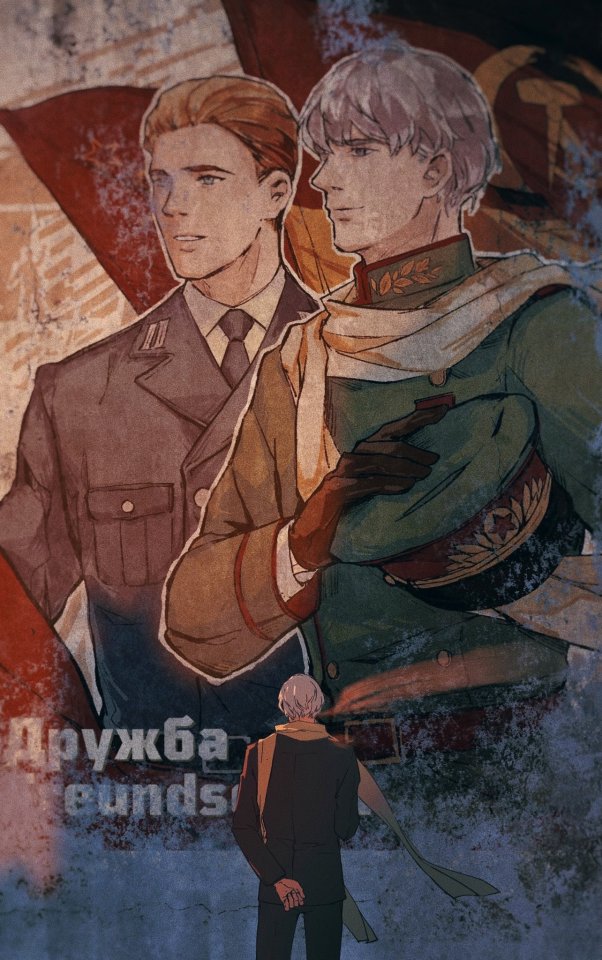
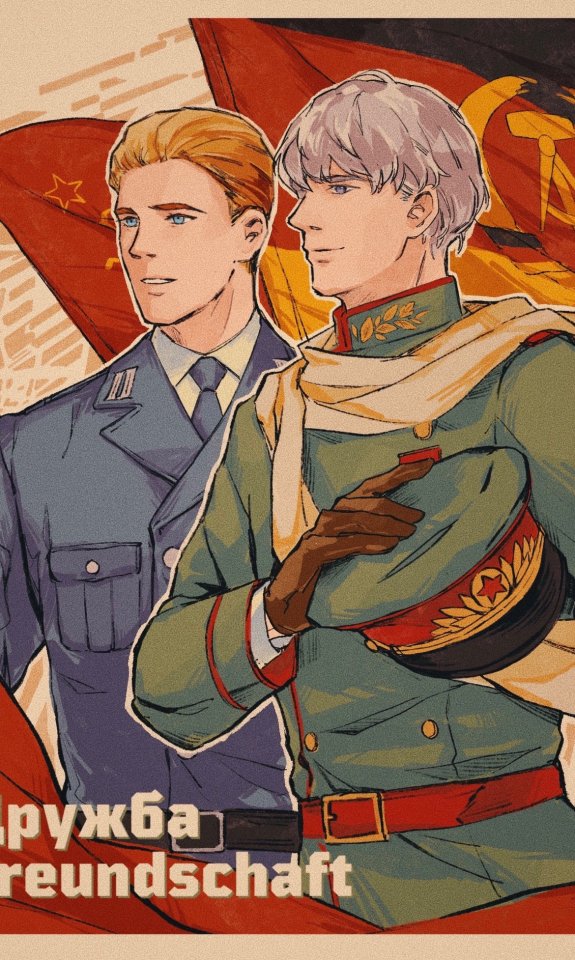
"We’re friends forever.” - An east german song about ussr/ddr ally. An art I made for a Lofter Hetalia fan event with theme USSR! Ivan & DDR(Eas Germany)! Ludwig I tried to do the historical poster style again, hope it turned out not bad.
#rusger#hetalia#hws russia#hws rusger#hws germany#ivan braginsky#ludwig beilschmidt#historical ?#ddr ludwig
527 notes
·
View notes
Photo
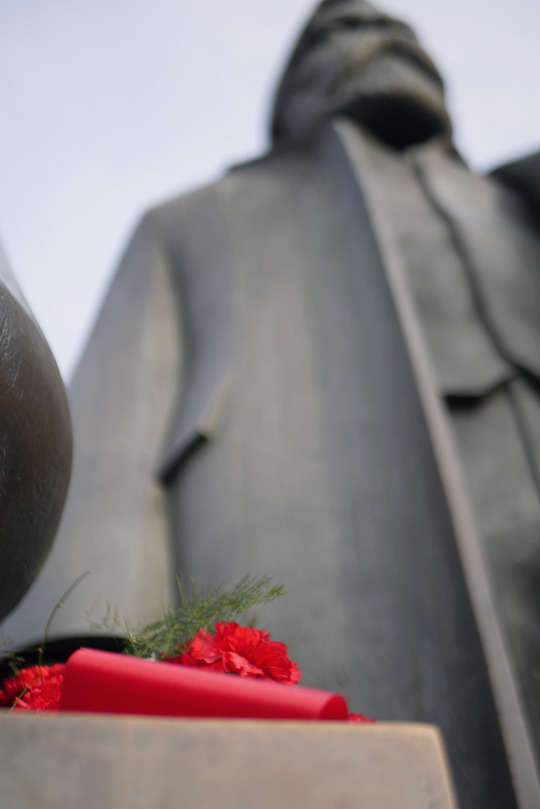
Die Nelken. / 17.12.2020
#Berlin#Berlin Mitte#Marx-Engels-Forum#Friedrich Engels#Kommunismus#Ludwig Engekhardt#Marx-Engels-Denkmal#wenig Rot#Bildhauerei der DDR#Kunst der DDR#2020#2020Dezember#2020Dezember17
12 notes
·
View notes
Text
@mauerfrau
When Ute had moved out, her room had become the catch-all in the house. At first, Ludwig had stacked boxes under her bed, then around, then on top because the mattress was shit anyway. Slowly, as dresses went out of fashion and journals were hidden under floorboards, and linens were shoved into metal or cedar boxes, and at the start of the last year, Ludwig had to admit he had to do something about it, if only to stop from worrying about what to do.
Picking through it and throwing out what might be perfectly good home goods would hurt his stingy nature. Everything he had bought was bought with the goal of keeping it for decades, centuries if possible. His bedframe was as old as the house, for heaven’s sake.
“I suppose,” he told Lily as he set George on the floor. “We should start at the most recent boxes and go from there.” George immediately ran off to get lost in the maze of boxes. It was keep him up here or leave him at the bottom of the stairs to bark his silly head off. Only he couldn’t seem to grasp the concept of spiral stairs.
“I think there’s some Communist stuff here. Things made in the DDR, at least. Cups, mugs, uh, I think some stationary...... But it’s old”
38 notes
·
View notes
Video
youtube
Ludwig Lustig und seine Dixielanders: „Heut' ist ein wunderschöner Tag“ Aufnahme aus dem Jahr 1964 (DDR, Amiga).
0 notes
Text
A Completely Objective and Logical Ranking of Every Hetalia Character Song
New character songs are dropping, I have too much time on my hands, let’s go.
Also here’s a Youtube playlist for the ~✨nostalgia✨~
Bring it on in the tags
71. Ah Legendary Class⭐The Awesome Me Highway [Prussia]: Absolutely tearing it up on the drums and on the vocal cords alike (I pray for Atsushi Kousaka). Great for the memes.
70. Happy Thoughts Museum [???]: This is listed as an official song but I had literally never heard of the title. Then I listened to it and BAM! Smack back to 2013 watching the teasers for the show on Funimation. Not sure I’d count it as a character song though...
69. (Nice) My Song that is written by me for me [Prussia]: Deafened me but I can appreciate the industrial grind.
68. My House is...Quiet. ~With the Trolls~ [Norway]: I have never heard this song, nor can I find any version of it online. By default it goes here and I am so sorry Norge.
67. Make a Wish to Santa♪ [Sealand]: The discordant notes and childish exuberance only serve to make this sound like a demonic plea to Santa to eliminate the singer’s enemies.
66. Heaven and Hell on Earth [Rome]: Rome sounds like he’s been in the corner of a restroom. Extra points for the metal version, minus points for the fact that the beach scene was replayed like 1764 times.
65. Canada Complete Introduction [Canada]: Quiet af until Kumacheerio shows up and blows out your speakers. they did you dirty my darling 😔
64. It’s Easy!!! [America]: I don't think any video of this has ever stayed up for more than 20 seconds. Sounds cool, but like I was listening to 20 different genres at once, someone make him calm down.
63. Bù Zàiyì the Small Stuff ☆ [China]: I cannot for the life of me find the complete song anywhere, clips have a cool beat though
62. Let's Boil Hot Water♪ [Italy]: Exactly what it says on the tin..though a bit too close to elevator music for my tastes.
61. The Fragrance of Early Summer [Japan]: Very ‘from the books’ Japan-esque song
60. Peace Sounds Nice…[Baltic Trio]: All well and good until the radio demon shows up
59. W●D●C ~World Dancing~ [America]: How a song can sound like it’s from 4 different decades at once is beyond me
58. Overflowing Passion [BFT]: This is just drunken karaoke and I have 0 clue what’s going on #iconicforallthewrongreasons
57. Ren●Ren●Renaissance♪ [Rome+Chibitalia]: Wholesome Grandpa with Grandson content - barring the fact that Italy sounds on the verge of a nervous breakdown and Rome has had too much wine.
56. Roma Antiqua [Rome]: Similar energy to any one of China’s songs - there’s a part of the song where it sounds like he’s singing in the shower, and I will never not laugh at [CENSORED]
55. Country From Where the Sun Rises, Zipangu [Japan]: Very chill, very Japan, but just meh for me.
54. Moon Over Emei Shan [China]: Good message, okay song.
53. My Friend [England]: What a mind palace you must have Mr. Kirkland
52. With Love, from Iceland [Iceland]: Three words: Heavy. Metal. Puffin.
51. Having Friends is Nice...♫ [Russia]: Russia is the cutest thing ever
50. Mm. [Sweden]: Smooth transition from WWE Smackdown to shopping at IKEA.
49. Why don’t you come over? ~Beyond the Northern Lights~ [Iceland]: I don’t want to be mean but...this does sound like the second closing theme to an anime whose first closing was much more popular (à la Soul Eater)
48. Gakuen☆Festa [Germany, Italy, Japan]: Sounds like a 60s song of the summer but oh dear their voices do not go together. Hella cute though.
47. Wa! Wa!! World Ondo [Main Cast]: One time I travelled 10 hours in a coach bus with a bunch of teenagers to a city of note in my country, and the only souvenir I bought was the fucking PAINT IT WHITE DVD. Perfectly chaotic, UN ĐĕùX~~
46. In the Bluebell Woods [England]: In the album cover for this song he’s holding a guitar but this is not a rock song. Still has ‘running through the hills’ levels of dramatism though.
45. Poi Poi Poi♪ [Taiwan]: You’re telling me that Taiwan, someone whose has *ONE LINE* in Beautiful World (which is criminal tbh what kind of representation-) managed to get an eNTIRE CHARACTER SONG???????
44. White Flame [Russia]: There’s something to be said for a song that is 3x the length of any Hetalia episode
43. Ich liebe… [Germany]: Baking cakes for your friends has never been so wholesome.
42. We Wish you a Merry Christmas [America, China, England, France, Russia]: Nice to see they’ve gotten their shit together since United Nations Sta-hmm.
41. Ah, Worldwide à la mode [France]: Sounds like a Disney Princess song, hard not to picture France frolicking in a field of flowers.
40. Che Bello! ~My House is the Greatest!⭐~ [Italy]: Would not be out of place in an advertisement for Sea World.
39. May You Smile Today [Japan]: THE feel good song of the summer
38. Let’s Look Behind the Rainbow [Italy]: I will protect you.
37. I'm your HERO☆ [America]: “Anyone who’s sad or sullen will be arrested” did NOT age well.
36. Mein Gott! [Prussia]: Alternating headphone effect at the beginning is cool, so is the confidence...the actual singing on the other hand...
35. Nihao⭐China [China]: Listen, all of China’s character songs are great, I just can’t vibe with this one like some of the others.
34. Pechka ~Light My Heart~ [Russia]: I’m still having difficulty wrapping my head around the fact that this and Winter were released at the same time.
33. Pukapuka⭐Vacation [Germany, Italy, Japan]: Seems just a bit too much like they’re running on a treadmill that’s picking up speed and trying to sing at the same time. Peppy.
32. Santa Claus is Coming to Town [Germany, Italy, Japan]: This is unironically the best song sung by this trio; can only vibe with for two months out of the year though.
31. Excuse Me, I Am Sorry [Japan]: Japan’s character traits speedrun. Gives me barbershop quartet vibes for some reason but is catchy as hell.
30. The Story of Snow and Dreams [Russia]: A superhero anime opening in the making
29. England’s Evil Demon Summoning Song [England]: Sir that is not how you roast a marshmallow, don’t cut yourself on that edge.
28. Moi Moi Sauna♪ [Finland]: Exactly the type of song you’d expect and it’s wonderful
27. United Nations Star⭐ [America, China, England, France, Russia]: This isn’t as much of a song as it is a four minute struggle for everyone to sing without America yelling every 5 seconds...Like a particularly musical episode of Hetalia.
26. Paris is Indeed Splendid [France]: Paris-pa-pa-pa-paris
25. Absolutely Invincible British Gentleman [England]: Poppy, rocky, polka-dotty
24. Vorwärts Marsch! [Germany]: To quote the comment section: “This sounds like a German version of I’ll Make a Man out of you.” There’s some truth to that.
23. Hamburger Street [America]: The product of America’s rapper phase. 8/10 because he’s trying so hard and because I can unironically sing along to all of this.
22. Hoi Sam☆Nice Guy [Hong Kong]: A song that would absolutely destroy the ankles of anyone in DDR.
21. I Am German-Made [Germany]: There was once a version that had Germany and Prussia singing at the same time and it sounded positively demonic and Broadway could never
20. La pasión no se detiene ~Unstoppable Passion~ [Spain]: Talented, brilliant, incredible, amazing, show-stopping...
19. Fall in Love, Mademoiselle [France]: Sounds like it should be in Mozart Opera Rock, I have kiss kiss falled in love.
18. Embrace the Très Bien Moi [France]: This is the definition of SELF LOVE PEOPLE.
17. Carrot and Stick [Belarus&Ukraine]: Absolutely DRIPPING in 2000s power ballad energy. The type of song that plays on repeat in the mind of the widow whose millionaire husband ‘mysteriously disappeared’ (and the only legit character song ever acknowledged by the anime)
16. C.B.C (Cowboyz Boot Camp) Vol. 1 [America]: AH MAH GAWWDDD
15. Winter [Russia]: Heavy metal fever dream and the perfect song for an angst-ridden teenager
14. Seychelles Here ⭐ Vacation Island [Seychelles]: UN👏DER👏RA👏TED SONG👏OF 👏THE 👏SUM👏MER👏
13. Nah, it will settle itself somehow [Romano]: One day I aspire to reach this level of chill
12. Let’s Enjoy Today [England]: I will never not feel happy when listening to this.
11. Einsamkeit [Germany]: Ludwig manages to air every single one of his worries about not being good enough compared to his friends and always being perceived as mean or uptight when he’s actually just a softie and now my heart hurts. 💔
10. Aiyaa Four Thousand Years [China]: A very poignant and beautiful song about the passage of time and the inevitability of its passing; comparable to an ancient ballad complete with explosive crescendos and meaningful lyrics.
9. Bon Bon Bon❤️C’est Bon C’est Bon! [France]: Peppy, cheerful, adorable, groundbreaking; has been my alarm tone for six years and I’ve yet to tire of it. 9/10 The moaning interspersed throughout has been an interesting wake-up call.
8. Let’s Enjoy! Let’s Get Excited! Cheers! [Denmark]: This is on par with Everytime we Touch by Cascada in terms of rage potential unlocked (the good kind)
7. Dream Journey [Japan]: Whoever’s playing the shakuhachi is absolutely KILLING IT. Dramatic, wonderful, great metaphors.
6. Gourmet’s Heart Beginner Level [China]: Absolute banger, I’m a vegetarian but this would inspire me to eat shumai.
5. Always with you...Nordic Five! [Nordic FIVVVVVEEEE]: Everyone harmonizes beautifully except for Denmark. Extremely catchy, number placement seemed appropriate.
4. Pub and GO! [England]: I love this trash man
3. Maji Kandou⭐Hong Kong Night [Hong Kong]: If you thought Denmark’s song was a banger JUST YOU WAIT. I WILL BLOW OUT MY SPEAKERS LISTENING TO LO-HA-SU.
2. Steady Rhythmus [Germany]: THIS SONG IS METAL AF. Seriously, if it can be classified as ‘hardcore’ by my father and his group of 50-somethings who have decided to single-handedly gatekeep the metal and hardrock genres, it can do anything.
1. The Delicious Tomato Song 🍅 [Romano]: Beautiful, absolutely awe-inspiring, poignant, catchy lyrics with an extremely deep meaning that only years of meticulous research and analysis can unlock, Romano I love you.
BONUS: Closing Songs
5. Hatafutte Parade (World Series)
4. Hetalian⭐Jet (The World Twinkle): The song is good, the dancing is cursed
3. Chikyuu Marugoto Hug Shitainda (World⭐Stars)
2. Marukaite Chikyuu (Hetalia: Axis Powers): nE NE PaPA
1. Mawaru Chikyuu Rondo (The Beautiful World)
#aph#hws#hetalia#aph america#aph england#aph france#aph russia#aph china#aph italy#aph romano#aph germany#aph japan#aph spain#aph prussia#aph canada#aph norway#aph denmark#aph sweden#aph finland#aph iceland#long post#i will be taking criticism at this time
101 notes
·
View notes
Note
pruaus (i just wanna hear more)
I'm gonna answer this one first so it isn't answered in the next one. ew / nonono / maybe / ship it / aww / otp / MY HEART this is my main thing. we all know this. i don't even know where to start!! i'm going to try to do a cut here because WOW this turned out to be long well ok first thing's first, my gilbert is pretty canon divergent. he's an old bastard, as a lot of them now are, esp the balts in general so like. this different background affects him a lot, and he was pretty antagonistic towards roderich in the beginning? austria helped in the northern crusades after all, but gilbert Did learn not to hold that against everyone fairly quickly. still, that's their first meeting. they kinda just didn't give too much of a damn about each other until prussia's independence in 1657. gil now had to actually live with his husband, whom he detested. so he just... enthusiastically volunteered to go to austria's court as an extra representative. the other reps (minden, mark, cleves, etc) were needed in their own territories. while brandenburg was the one with the elector's seat, he was also the more "important" one of the two soooo... gil got away! this leads to gilbert thinking that roderich is a safe place, because, comparatively, he is. they're both in their mid/late teens at this point and do develop an attachment to each other. gilbert has his first crush on a dude, and roderich... sees a way to piss antonio off lmfao. gil gets his teenage joker gilcel moment when roderich tries to make things happen again with toni, but does wrestle a kingdom title out of it by helping rod. still in joker mode, silesian wars happen. they hate each other, though gil does just become a bit more apathetic to roderich during this time. after this, he's Not A Fan of roderich at all, until the polish partitions. working with two people to get your sister's (nyo!prussia, maria) birthplace back does that to a man. it was a tense friendship, and roderich got his own taste of unrequited love, since gilbert was head over heels w fritz at the time. they grow closer during the napoleonic wars, and gilbert is seeking comfort to fill in the hole in his heart from fritz's death, as well as the sheer humiliation he felt from losing so much to france. thus! the battle of leipzig is where i have their first kiss :) totally spur of the moment, definitely awkward afterwards. their relationship grows more official as the demand for a unified germany grew. tbh i can't say anything too certain abt how the germany twins (monika and ludwig) came about because this isn't my era, but this relationship did end in the custody battle that gilbert won. ... he also eloped with romania in the middle of this. what can i say? he was pissed! he was even more angered at the austro-hungarian marriage. at the end of wwi, all of that crumbled apart, though, and gilbert returned to roderich with his tail between his legs and they started anew. they kept in good contact during his days in the DDR (for the circumstances), though they were able to talk less and less as the years went on. international affairs such as the olympics were treasured by them as gilbert was able to meet up freely with roderich there. their relationship was definitely tense at that point-- gilbert feared roderich going back to toni, and roderich feared gilbert going back to romania-- and, well. drunken and not-so-drunken mistakes happen. they worked past it! present day, they have their son, kugelmugel (leopold) and gilbert lives 50/50 between potsdam and vienna, though he is able to spend more time with his family now that remote work is an option. he represents the state of brandenburg, so he and roderich have a nice relationship that isn't strained by any impending death lmfao. the stars were totally crossed against them, but they made it work, damn it!!!!
#pruaus#historical hetalia#gilbert beilschmidt#roderich edelstein#hws austria#hws prussia#yandereleorio
12 notes
·
View notes
Text
Groundspotting Friedrich-Ludwig-Jahnsportpark, Spielort des DDR-Rekordmeisters BFC Dynamo und der VSG Altglienicke. Das Stadion, in dem auch das Berliner Pokalfinale stattfindet, soll dieses Jahr abgerissen werden und durch einen Neubau ersetzt werden. An den nostalgischen Flutlichtern fehlen schon die Lampen.
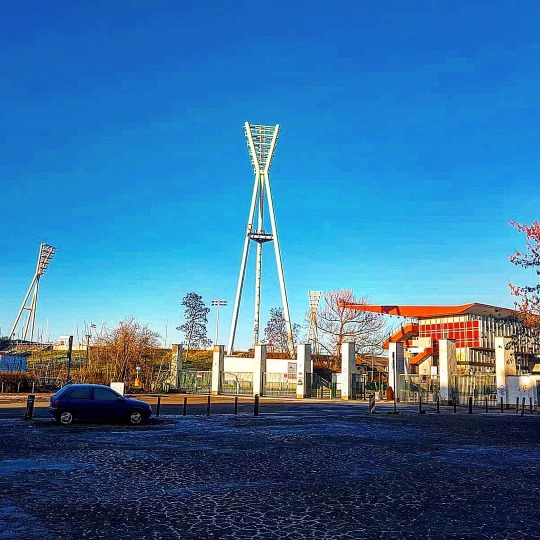

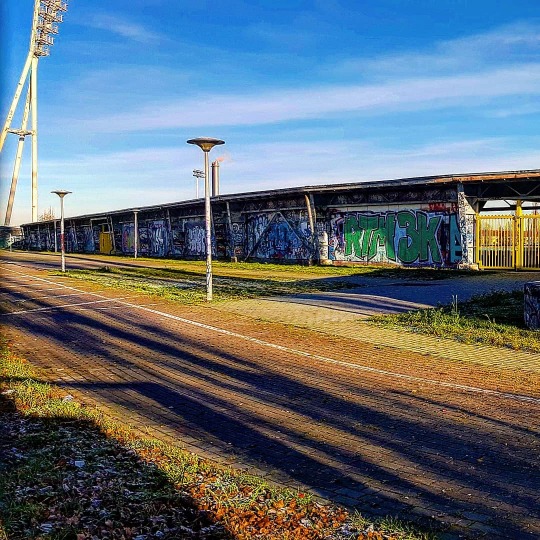
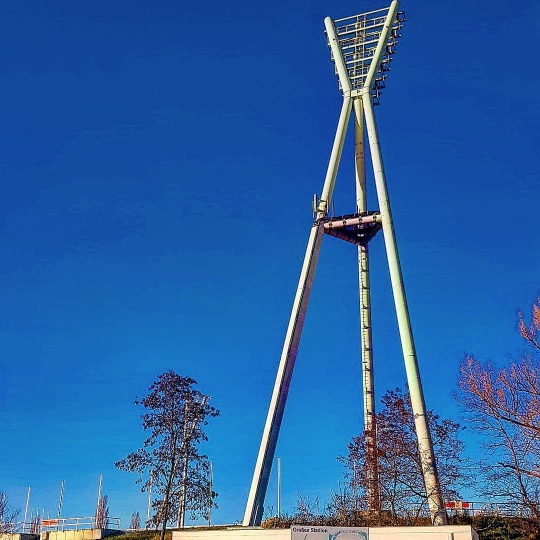

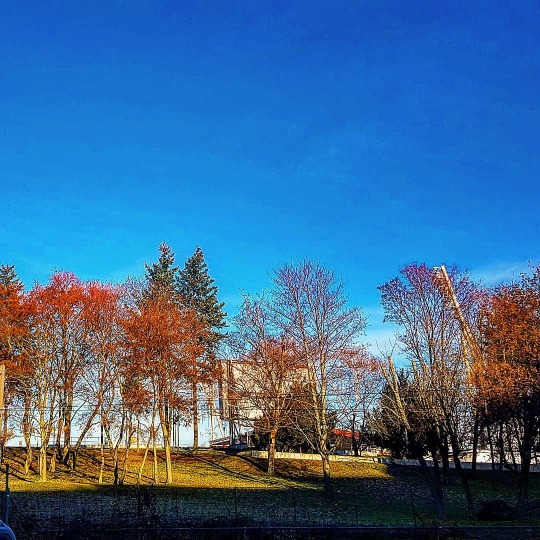

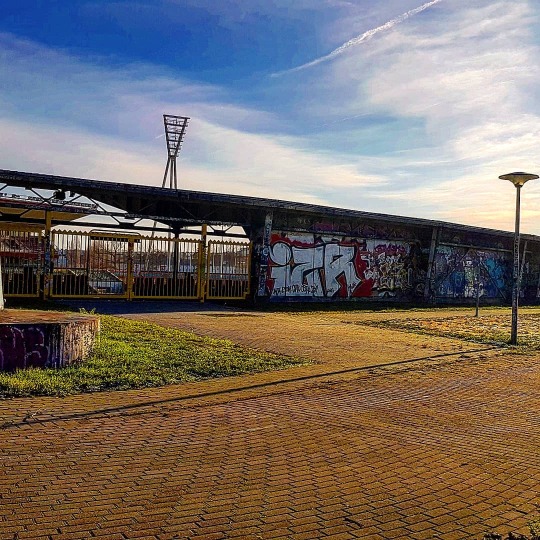


Auch sind Bilder von der direkt angrenzenden Max-Schmeling-Halle wo die Füchse Berlin und die Berlin Recycling Volleys spielen dabei. "#groundhopping", "#groundspotting", "#thechickenbaltichronicles", "#stadion", "#stadium", "#stadio", "#ground", "#jahnsportpark" "#berlin", "#pankow", "#ostberlin", "#prenzlauerberg", "#maxschmelinghalle", "#friedrichludwigjahnsportpark", "#dynamo", "#bfc", "#bfcdynamoberlin", "#vsgaltglienicke", "#regionalliganordost", "#füchseberlin", "#lowerleague", "#fussball", "#football", "#calcio", "#photo", "#picoftheday", "#pictureoftheday", "#berlinrecyclingvolleys", "#bfcdynamo", "#dynamoberlin"
1 note
·
View note
Text
Schmale Häuser (3): Die Inwertsetzung des Luftraums

Rungestraße 10, Berlin-Mitte, 2019
Der zweistöckige Bau Rungestraße 10 steht in Mitte, unweit vom Köllnischen Park. Früher, als rechts noch ein Nachbarhaus bündig anschloss, dürfte weniger aufgefallen sein, wie sehr schmal das Haus ist – 3,50 Meter an der Straße (hinten etwas breiter). Dann aber wurde der Nachbar abgerissen und der Nachfolger – vermutlich dem Sicherheitsbedürfnis der dort arbeitenden türkischen Botschaftsangehörigen entsprechend – von der Straße zurückgesetzt.
Wie und wann aber kam es zu diesem schmalen Bauwerk? Hier eine Herleitung auf Basis der historischen Stadtpläne und Adressbücher (samt Angaben zu den Eigentümern) und der Befunde vor Ort.
1870 ist hier noch nichts. Die Rungestraße heißt noch Wassergasse und das Grundstück ist leer. Eine Hausnummer – und vor allem einen Eigentümer – gibt es trotzdem bereits, den Zimmermeister Gustav Adolf Ludwig Schultz. Schultz gehört auch das ebenso leere benachbarte Grundstück Wassergasse 9. Seine Zimmerei ist gleich links um die Ecke ansässig, im Haus Brückenstraße 13a. In der Brückenstraße gehören Schultz, damals „Brücken-Schultz“ genannt, auch die Nachbarhäuser, mit den Nummern 13 und 14. Und Brückenstraße 13 zeigt mit der Rückseite zu Schultzens leerem Grundstück an der Wassergasse. In den folgenden Jahren – es ist die Hochphase der Gründerzeit – legt seine Firma scheinbar einen raschen Aufstieg hin: 1877 firmiert er im „Adreßbuch der Kaufleute, Fabrikanten und Gewerbsleute von Brandenburg und Berlin“ mit repräsentativer Anzeige als Eigentümer einer Baubedarfsfabrik in Schöneweide, die Materialien zum Bau ganzer Häuser herstellt und anbietet, die Bauten auch gleich selbst auszuführen.
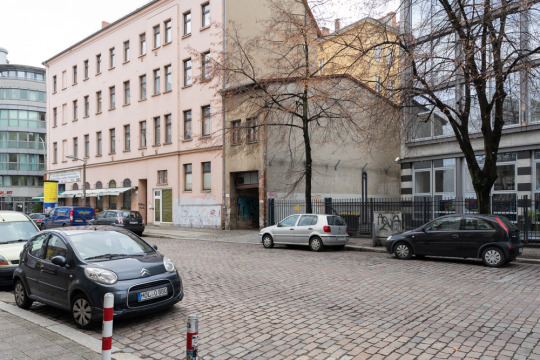
Nur 3,50 Meter breit, aber immerhin 15 Meter tief.
Bereits 1874 hat Schultz jedoch eines seiner drei Häuser an der Brückenstraße verkauft – das mit der Nummer 13. Der neue Eigentümer ist ein Kaufmann namens Salomon Löwenthal. Zu dessen neuerworbenem Haus und Grundstück gehört auch ein Hinterhof. Doch Löwenthal hat ein Problem: Es führt keine Durchfahrt durch sein neuerworbenes Haus nach hinten. Aber Berlin läuft damals heiß, Grundstücke, Häuser, Werkstattgebäude so nah an der Innenstadt sind heiß begehrt, buchstäblich jede Fläche will bespielt und genutzt, und vor allem profitabel gemacht werden. Ohne Zufahrt ist aber mit dem Hinterhof wenig anzufangen, er wirft nicht ab, was er abwerfen könnte. So kommt Löwenthal etwa 3 Jahre nach dem Erwerb des Hauses, also etwa 1877, noch einmal auf Schultz zu – und erneut mit ihm ins Geschäft. Löwenthal kauft Schultz nun auch noch einen schmalen, unbebauten Streifen von der Wassergasse nach hinten ab, das Grundstück Wassergasse 10. Nun hat er ein Gelände, das gerade einmal breit genug ist, um als Zufahrt zu seinem Hinterhof zu dienen, nur eben über Eck, von der Querstraße aus. Das Grundstück links neben der schmalen Zufahrt, Wassergasse 9, behält Baunternehmer Schultz hingegen. Er bebaut es etwa 1884 mit einem Mietshaus, das sich bis heute links vom schmalen Haus erhebt. So wird das Areal nach und nach immer weiter in Wert gesetzt. Kaum noch ein Fleckchen Boden ist geblieben, das für seinen Eigentümer keinen Profit absetzen würde.
Nur die Zufahrt, die ist eben bloß das, eine Zufahrt, wird sich Löwenthal gedacht haben. Und so macht er sich 1889 daran, diesen in sich unprofitablen Zustand zu ändern. Er erobert den Luftraum über der Einfahrt und setzt ihn in Wert, indem er den nur 3,50 Meter schmalen, aber 15 Meter langen Weg zu seinem Hinterhof mit einem nur 3,50 Meter schmalen, aber 15 Meter langen Haus überbaut – selbstverständlich unter Beibehaltung der Zufahrt zum Hinterhof. Zur Straße hin lässt er den Zimmern über der Durchfahrt sicherlich eine stuckierte Frontseite vorblenden. Jedes Haus bekam damals eine Stuckfassade, und sei es noch so klein und schmal. Vermutlich nach 1945 wurde der Dekor entfernt, die Fassade also entdekoriert und mit Glattputz versehen. Auf der breiteren Rückseite zum Hof findet man noch heute eine überraschend prachtvolle Klinkerfassade. Räume ließen sich nun in diesem Neubau nur wenige schaffen: Im Obergeschoss liegen vier kleine Kammern, die man über eine außerordentlich steile Treppe hinter einer Tür rechts in der Durchfahrt erreicht.
Wie gut aber ließ sich der in Wert gesetzte Luftraum nun tatsächlich vermarkten? Wie wurde er genutzt? Offenbar in erster Linie zu Wohnzwecken: 1890 erscheint im Berliner Adressbuch der erste Bewohner des Hauses, es ist ein Getreide- und Fouragehändler namens Max S. Weile (Getreide und Fourage heißt, auch den Getreidehalm komplett zu verwerten: das Korn fürs Brot, der Halm als Fourage, das heißt Pferdefutter). Es folgen ihm nacheinander die Friseurin H. Fischer und der Apotheker Rudolf Schrader, dann die Näherin Johanna Markword, später der Hausdiener A. Buchholz und dann der Goldschmied F. Eisolt. Als 1918 der Erste Weltkrieg endet, gehört das Haus immer noch der Familie des Erbauers Löwenthal, und oben wohnt gerade ein Kaufmann P. Pietro, ein damals für Berlin sicher noch ungewöhnlicher Nachname.
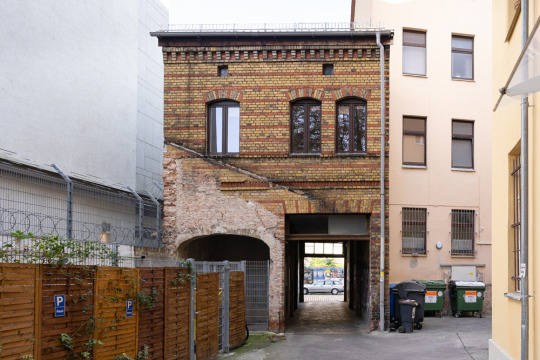
Die verklinkerte Hoffassade mit Spuren eines einst hier angesetzten Schuppens, 2020
Wie es mit dem Haus weiterging, weiß ein taz-Artikel aus dem Jahr 2000: „‚Bis zum Fall der Mauer hat ein Malerbetrieb die Räume genutzt,‘ sagt Waika Reusche, die seit 12 Jahren im Hinterhaus der Nummer 10 wohnt. ‚Danach baute eine Kinderbande sich eine Räuberhöhle darin, bis 1993 die Wohnungsbaugesellschaft Mitte das Haus fest verrammelt hat. 1994 ging der zu DDR-Zeiten zwangsenteignete schmale Besitz wieder zurück an den früheren Eigentümer Hans-Otto Weigel, der im Taunus wohnt. Sein Vater, der damals Geschäftsführer einer Schuhfirma war, hatte das Haus 1925 gekauft und bis 1948 an einen Handwerksbetrieb vermietet. Doch heute findet Weigel keine Verwendung mehr für sein zurückgewonnenes Eigentum: ‚Kein Mensch hat Interesse, in diesen alten Schuppen zu ziehen. Der hat ja nicht mal eine Heizung. Sobald ich das Geld daür übrig habe, lasse ich das Haus abreißen‘, sagt er. […] Das Baujahr des Hauses kann selbst der Besitzer nur grob schätzen: so um 1890.“
Nicht schlecht geschätzt.
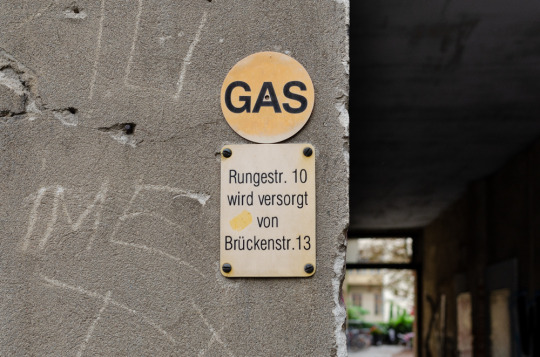
Ein Schild, das in aller Kürze die Geschichte des Hauses erzählt.
Literatur
Berliner Adressbücher (https://digital.zlb.de/viewer/cms/141/)
5 notes
·
View notes